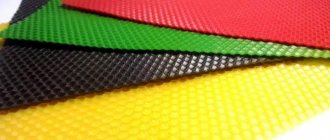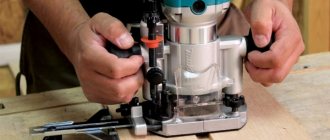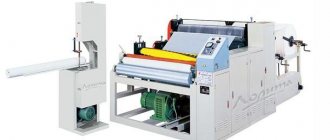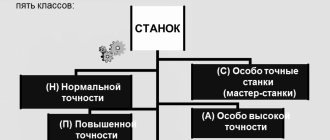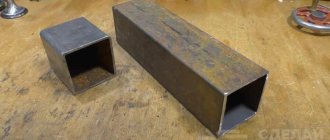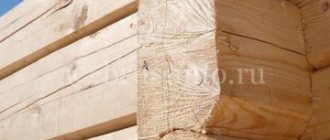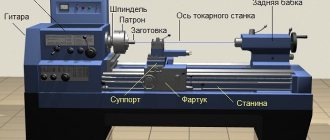As you know, our country is famous for its large number of woodworking industries. It is no secret that when processing wood, a lot of wood waste (sawdust, wood chips) remains, most of which is simply thrown away. However, it is woodworking waste that can often be used to organize the production of high-quality materials, one of which is wood concrete.
Arbolite or wood brick is an inexpensive and environmentally friendly building material used in the construction of low-rise buildings and structures, and also serves as insulation for load-bearing walls. The material itself is a block measuring approximately 500x250x200mm, consisting of a mixture of sawdust, cement, water and aluminum sulfate (or calcium chloride).
The main attractiveness of wood concrete is that most of the raw materials for its production are almost free (sawdust, sand, water). Thanks to this, low production costs are achieved, which allows you to receive additional profits. Moreover, organizing a business does not require many resources, labor or large production areas.
The production of wood concrete is beneficial for the following reasons:
- Low initial investment for starting a business;
- Low cost of finished products;
- Wood concrete is an inexpensive and environmentally friendly building material, the demand for which will only grow.
How much money do you need to start a wood concrete production business?
This business involves organizing a small mini-enterprise for the production of wood concrete with a production volume of 500 m3 of products per month. To organize the business, an investment of 900,000 rubles will be required.
The starting cost estimate is as follows:
- Mixing station – 120 thousand rubles;
- Molds (30 pieces) – 110 thousand rubles;
- A set of manual rammers – 15 thousand rubles;
- Drying chamber - 350 thousand rubles;
- Metal pallets – 30 thousand rubles;
- Wood chipper RRM-5 – 150 thousand rubles;
- Additional equipment (cement dispensers, wood chips) – 50 thousand rubles;
- Other expenses – 75 thousand rubles;
Total - 900 thousand rubles.
Workshop organization
Before organizing a workshop for the production of wood concrete, it is necessary to develop a business plan. When drawing up a plan, such nuances as demand for finished products, their assortment, availability and accessibility of raw materials, competition in the chosen field, taxation, etc. are taken into account.
Organization of production consists of the following stages:
- registration of an enterprise (you can register both a legal entity and an individual entrepreneur);
- searching for suitable premises;
- acquisition, installation and commissioning of a production line;
- recruitment and training of personnel;
- study of technological production processes;
- searching for suppliers of raw materials and forming a supply of them for at least a month’s operation of the enterprise at full capacity.
The optimal taxation system is a simplified one, providing for payment of a tax of 6%. When hiring personnel, registration with the Pension Fund and the Social Insurance Fund is required.
Financial investments in organizing a production line that produces approximately 6-7 m³ of products per shift amount to about 500 thousand rubles.
The cost of equipment (chip cutters, concrete mixers) will range from 45 to 80 thousand rubles.
Equipment with higher productivity will cost 230 thousand rubles. The set of universal automated complexes includes concrete mixers, vibrating presses, dosing hoppers, belt conveyors and receiving hoppers.
On average, such a line produces about 50 m³ of wood concrete slabs. To organize production, you will need personnel, supplies of raw materials, and large production areas.
SGS-L4 is considered one of the best production lines. In order to launch it and ensure uninterrupted operation, about 1 million rubles will be required.
Wood concrete production
Room
In order to open the production of wood concrete slabs, you will need a room with an area of about 200 square meters, on the territory of which there are:
- production area;
- drying zone;
- warehouse area;
- administrative premises;
- staff rest areas.
The room must be connected to the necessary communications, including power supply, water supply and drainage systems, heating and ventilation.
Important! In the block drying area, the temperature should not be lower than 12 °C.
Equipment
To open a workshop for the production of wood concrete slabs, you must purchase the following equipment:
- A chipper is a machine used to produce and process wood chips. The machine is required to obtain chips of the desired shape and size, as well as to remove foreign inclusions (for example, metal waste). Most machines can sort wood chips based on size. The cost of equipment varies from 100 to 300 thousand rubles. European and Russian machines are of the best quality. The lower cost of Chinese equipment is also due to its lower reliability.
Reference! A number of block manufacturers use multifunctional machines with additional functions, for example, allowing the production of decorative chips. The cost of such equipment is 3 million rubles.
- Mills or crushers. The quality characteristics of wood chips are improved due to additional grinding. At the second stage, processing is carried out using hammer mills, shredders, disk chippers or rotary knife crushers. Equipment can be purchased for 120 thousand - 1 million rubles.
- Concrete mixer costing from 75 thousand to 305 thousand rubles.
- A dispenser that measures the volume and supplies the mixture. Its cost starts from 20 thousand rubles. Instead of a dispenser, you can use mixing containers at the initial stage, but they are less effective.
- Stacking bunker, the cost of which starts from 500 thousand rubles.
- Collapsible wooden or metal forms can be made independently or to order. The cost is affected by the material of manufacture, as well as the number of forms.
Additional equipment will be required depending on the choice of block manufacturing method:
- Manually. It is usually chosen at the initial stage. The effectiveness of this method is low, since the mixture is compacted into molds manually. There is no need for additional equipment when choosing this method, but the quality of the blocks will be low.
- Manually on a vibrating table. With this method, the mixture is also compacted into molds manually, but they are placed on a vibrating table. The quality of finished wood concrete blocks is higher than that produced manually. The cost of vibrating tables depends on their power and ranges from 25-90 thousand rubles.
- The highest quality products are obtained using a vibrating machine. The molds are placed on the machine, and the mixture poured into them is compacted and compressed using a press. The cheapest vibrating machines can be purchased for 80 thousand rubles.
Staff
The operation of one production line can be ensured by 4 employees working in shifts of 8 or 12 hours.
The uninterrupted production process of wood concrete slabs can be ensured by hiring 8-12 workers. In this case, the work can be done in several shifts and seven days a week.
There are no qualification requirements for workers. It is enough that they are disciplined, have a high ability to work and do not have bad habits.
The remuneration system can be piecework, that is, fixed for a certain number of blocks and as a percentage of the number of products manufactured.
Equipment for wood concrete
Where to start a wood concrete production business
To produce a product with a volume of 500 m3 per month, you will need to rent a premises with an area of at least 250 m2.
Thanks to the installation of a drying chamber in the room, the curing time of arbolite blocks is reduced to several hours.
The area of the room will be divided into:
- Production area – 50 m2;
- Holding and drying area – 100 m2;
- The storage area for finished products is 100 m2.
The company will operate one shift (8 hours) 5 days a week. The company's staffing will include 6 people: 4 general workers, an accountant and a sales and supply manager. A 2/2 shift work schedule will be established for general workers.
Table No. 1: Planned staffing at the enterprise
| Job title | Number of employees, people | Salary, rub./month. | Total, rub. |
| Handyman | 4 | 10 000 | 40 000 |
| Accountant | 1 | 15 000 | 15 000 |
| Purchasing Manager | 1 | 15 000 | 15 000 |
| TOTAL | 6 | — | 70 000 |
Advantages of arbolite blocks
Arbolite, as a building material, has a number of advantages, which include:
- Arbolite is an environmentally friendly building material;
- The thickness of the wood concrete is only 30 cm, but at the same time its heat-insulating and sound-proofing properties are higher than a wall three bricks thick (75 cm);
- Easily subjected to any mechanical processing, be it sawing, grinding, drilling, etc.;
- Wood concrete blocks, unlike wood, are not subject to rotting processes or infection by fungi and other microorganisms;
- The construction of buildings and structures using arbolite blocks takes place in the shortest possible time with the least expenditure of effort and financial resources;
- High fire resistance allows it to be used for the construction of facilities with increased fire safety requirements;
- Refers to a lightweight building material. Its weight is much less than that of most other building materials;
- Thanks to its large-porous structure, improved air exchange and humidity levels in the room are ensured;
- Houses built from wood concrete are characterized by increased durability and their service life significantly exceeds human needs.
We make a wood concrete chip cutter with our own hands
To make a wood concrete wood chip cutter, you need to prepare all the necessary parts, after which you can begin assembling the unit. Some parts are worth looking for, others are quite possible to do yourself.
Disc with knives
The diameter of the disc should be up to 30-35 centimeters, thickness – 2 centimeters. To eliminate the possibility of jamming of hard/large pieces of raw material, the disk must operate on the flywheel principle, which is why it is made heavy.
You can take a metal blank or cut it out of a piece of sheet steel, then saw through one central hole in the part (to seat the shaft, taking into account the keyed fastening), and also make several mounting holes, 3 grooves, through which the cut pieces of wood will be sent under rotating hammers.
To make knives, take car springs, make 2 holes in each of the knives, then countersink them (you need to recess the screw heads as much as possible), attach them to the disk using bolts with a special countersunk head for a hexagon, due to which it is possible to create a reliable and tight connection . In addition, in this case the bolts will not be able to rotate when the nuts are compressed on the other side.
Hammers
This part is a flat plate up to 5 millimeters thick, located in the rotor. Hammers are responsible for additional grinding of raw materials; it is better to buy them ready-made. The distance between the hammers themselves directly in the crusher should be 24 millimeters.
Sieve for wood chips
To make a sieve, inside which the grinding chamber will be located, take a metal cylinder with a diameter of 30-35 centimeters, made from a sheet of metal 94.2-100 centimeters long.
In the cylinder itself, cells are made with a cross-section of 8-12 millimeters, preferably using a core or a punch (do not drill), so that the edges of the cells are torn or sharp.
Protective cover, funnel, hopper and frame
To create a protective casing and receiving funnel for the receiving hopper, sheet iron 8-12 millimeters thick can be used. The sheets are cut to size and welded according to the drawing. The parts are cut according to previously known sizes and “patterns” (they can be prepared in advance using thick cardboard). Stiffening ribs are made from pipes, channels or angles.
The cutting unit itself should not even minimally cling to the walls of the unit body; it is desirable to place it freely in the body, so the optimal diameter of the flywheel is made smaller in size by about 3-5 centimeters than the size of the body.
The main parts of the crushing unit: these are shaft journals on which support bearings, hammers and a cutting disc are mounted. To form the working shaft, it is enough to cut holes, inlet/outlet sockets intended for supplying raw materials and exiting chips.
The hopper for receiving raw materials is welded at an angle to the body. Electric or mechanical drives are mounted at the final stage: an electric motor is attached to the frame, then pulleys of the required size, and all components are connected by a belt drive. Usually, ordinary car belts of the appropriate diameter are used for this purpose.
Engine
The amount of operating costs and the productivity of the wood chipper will depend on the type of engine. An electric motor is considered the most environmentally friendly option; it is lighter than an internal combustion engine, produces less noise, but also exhibits lower power. It is worth remembering that an electric chip cutter will depend on surges in the voltage level in the network.
A device with a more powerful gasoline engine will work longer, be more productive, and does not require a network or outlet. But the internal combustion engine makes a lot of noise, significantly pollutes the air, and requires constant maintenance and regular refueling.
Provided that the assembled wood concrete wood chip cutter is designed accurately and there is no deviation in coaxiality, you can use a coaxial circuit instead of a belt connection, mounting the shaft connection through a coupling.
Equipment for the production of wood concrete
The main equipment for organizing production includes:
- Mixing station, (3 cubic meters) for the preparation of wood concrete mass;
- Molds for the production of blocks of a given size (300*200*500 mm, 500x250x200mm, etc.);
- A set of manual rammers or equipment for vibration compaction.
The list of additional equipment includes:
- Drying chamber for faster curing of arbolite blocks;
- Chips for chopping large chips;
- Receiving hopper for feeding wood chips to the mixing station;
- Conveyors for delivering wood concrete mixture to areas for vibration compaction;
- Metal pallets for finished blocks.
The main raw materials for the production of wood concrete blocks per 1 m3 are:
- Wood chips – 1166 liters. In this case, the wood chips should not be freshly cut; it must be previously stored under a canopy;
- Aluminum sulfate solution – 112 liters (90 kg of dry matter per 1000 liters of water);
- Cement – 237 liters;
- Water depending on the moisture content of the chips. Water must be added until the mixture begins to shine.
Accordingly, to produce 500 m3 of wood concrete blocks per month you will need:
- Chips: 583 thousand liters of wood chips;
- Aluminum sulfate solution: 56 thousand liters;
- Cement: 118 thousand liters.
Briefly about the main thing
Producing high-quality wood concrete at home is not an extraordinary task. The only serious difficulty may be finding a wood chipper. In extreme cases, it can be made or ordered, but if there is somewhere to buy ready-made wood chips, then this problem is solved.
The wood chips used should be kept in the sun for about a month to neutralize the organic matter inside them. You can also use it when wet for the solution.
There are two main methods for stripping finished blocks. To choose the right one, it makes sense to make trial blocks and compare the results.
Technology for the production of wood concrete blocks
- Loading chips into the mixing station, turning on the drive and adding aluminum sulfate (or calcium chloride). The screws of the mixing station split the wood chips to the required sizes and neutralize the sugars in the wood chips using aluminum sulfate.
- After splitting the wood chips, water and cement are added to the mixing station and the final mixing of the wood concrete mixture occurs.
- The finished wood concrete mixture is transported to the compaction site and loaded into molds. Compaction occurs using manual tampers or by vibrating with a weight.
- Once compaction is complete, the blocks are removed from the molds. The finished blocks should be kept for at least 2-4 days, after which they can be freely moved and stacked one on top of the other. Arbolite blocks can be placed on pallets up to 2 m high after 7 days. The blocks acquire their final density only after a month. When using a drying chamber, wood concrete blocks are ready for construction immediately after removal from the chamber, which significantly reduces the use of additional storage facilities.
Chip cutter for making wood concrete: operating principle
Before you start making wood concrete chippers with your own hands, you should carefully study the drawings, examine the design, find all the necessary parts and only then assemble them together. The main components of the machine are a chipping disc with knives, as well as a rotor with blades and hammers. The disk is fixed on the working shaft, which is driven by a pulley connected to the engine by a belt. The shaft moves on two roller bearings, the engine is mounted on a frame.
Raw materials are fed manually - the ones to be processed are thrown into the receiving hopper, and then the waste is pulled under hammers/knives. At the last stage of processing, the chips are sent with blades to a sieve and exit the chip cutter through a special opening for unloading. At the entrance, the receiving hopper is made in a funnel format to make feeding raw materials simple and safe.
What characteristics should a wood chipper meet:
- Motor power is about 7.5 kW.
- The motor rotation speed on the working shaft is a maximum of 3000 rpm.
- The optimal rotation speed of the shaft where the disk with knives is mounted is 1500 rpm.
If you increase the shaft rotation speed, there is a possibility that the wood raw material will begin to turn into dust (instead of producing chips of the required size), but the productivity of the equipment increases.
How much can you earn from the production of wood concrete blocks?
One of the main tasks when organizing this business is to find channels for selling finished products. In order to ensure that wood concrete blocks do not linger in the warehouse, it is necessary to think in advance about the points of sale of manufactured products and plan the monthly production volume based on the current demand for the product. The main sales season for crossbow blocks begins in spring and ends in autumn. The retail price for 1 m3 is from 4,000 thousand rubles. Wholesale price – from 2500 per 1 m3. Sales of finished products are possible in the following ways:
- Sale of blocks to large wholesale resellers;
- Sales of products at retail prices to the public for individual construction;
- Concluding contracts for the supply of wood concrete blocks to construction organizations;
- Sale of blocks in small wholesale to organizations involved in the sale of building materials (construction markets, hypermarkets).
Making molds for concrete
Mold for arbolite blocks.
To produce sawdust concrete blocks you will need molds. If you plan to produce large-sized material, then it is better to make the molds detachable. For small blocks, forms that have a cellular structure are suitable.
The molds are made from 2 cm thick boards, which are covered inside with sheet steel. Thanks to the presence of metal, maximum waterproofing is achieved. The boards should not absorb moisture from the working mixture. In addition, molds lined with sheet steel make it easier to remove completed blocks.
If you decide to use forms without steel, then before laying the prepared mixture and during the process of making blocks, the structure is abundantly moistened. Sawdust concrete should not be allowed to dry out prematurely.
When making molds, one more nuance should be taken into account. When dried, the mixture shrinks and the material becomes slightly smaller in size. Therefore, if you plan to make material of a certain size, then the dimensions of the mold should be 10% larger than the blocks.
Wooden forms are placed on plastic or metal pallets, which are covered with a thin layer of sawdust. If you need to make internal holes in sawdust concrete, then the mold should contain sheets of roofing felt, rolled into a tube. To speed up the production process, 15-20 molds are created at once. This will significantly save time for subsequent construction work.
How much money do you need to start a business producing wood concrete blocks?
Let's calculate the monthly expenses of an enterprise producing 500 m3 of finished products per month:
- Rent of premises 250m2 – 80 thousand rubles;
- Costs for raw materials (cement, aluminum sulfate, wood chips) – 800 thousand rubles;
- Utility costs (water, heating, electricity) – 40 thousand rubles;
- Salary and insurance contributions – 90 thousand rubles;
- Taxes (USN 6% of gross income) – 90 thousand rubles;
- Advertising – 10 thousand rubles;
- Other expenses – 50 thousand rubles.
Total expenses: 1,260,000 rubles per month Next, let’s calculate the monthly income of an enterprise producing 500 m3 of wood concrete per month. It is planned to sell the entire volume of produced products monthly, that is, 500 m3 of wood concrete blocks. It is assumed that of the total volume of products produced, 70% will be sold at a wholesale price (2,500 rubles/m3) and 30% at a retail price (4,000 rubles/m3). The total amount of revenue will be 1,475,000 rubles per month.
Economic performance indicators of the enterprise (month): Gross income - 1,475,000 rubles Expenses - 1,160,000 rubles Profit - 315,000 rubles Profitability - 27% Payback of the project - only 2.5 months
Permissions to open
To open the production of wood concrete, an operating license is not required. But it is necessary to obtain permission from Rospotrebnadzor. For this purpose, the following documents must be provided:
- registration documents;
- a production control program, which indicates how the requirements of the SES are fulfilled;
- an agreement with a company for solid waste disposal;
- an agreement with a company for the recycling of fluorescent lamps;
- premises rental agreement;
- documents for purchased equipment;
- production flow chart.
In addition, you must obtain permission from the fire department. The rental agreement for the premises must be concluded for a long term.
(
1 ratings, average: 5.00 out of 5)
Loading…
Similar business ideas:
- Sawdust recycling as a business idea
- TOP 30 business ideas with minimal investment
- TOP 30 business ideas without investment
- The best business ideas for a village

